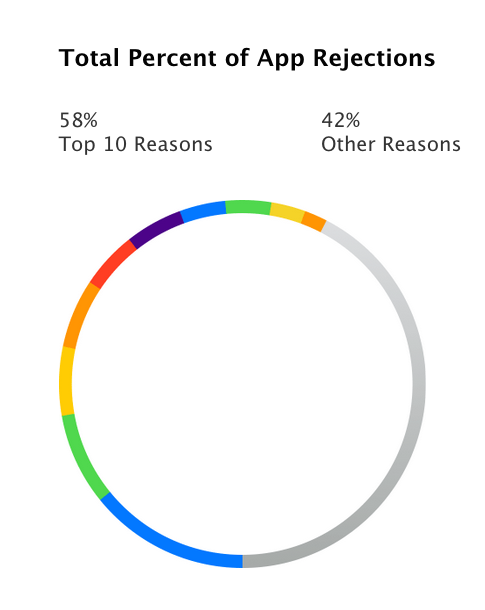In an effort to provide further guidance to app developers, Apple has published a new webpage highlighting some of the most common issues that lead to rejections of apps submitted to the App Store and the Mac App Store.
As noted by Apfelpage.de (via 9to5Mac), the new page mentions bugs, substandard user interfaces, placeholder content, incomplete information, inaccurate and misleading descriptions, and issues concerning advertisements among the usual reasons for app rejections.
The page also provides a link to Apple’s app review guidelines and resources.
What’s more, the page includes a list of the top 10 reasons for app rejections during the seven-day period that ended on the day of the last App Store and Mac App Store refresh, i.e., last Thursday, Aug. 28:
- 14% More information needed
- 8% Guideline 2.2: Apps that exhibit bugs will be rejected
- 6% Did not comply with terms in the Developer Program License Agreement
- 6% Guideline 10.6: Apple and our customers place a high value on simple, refined, creative, well thought through interfaces. They take more work but are worth it. Apple sets a high bar. If your user interface is complex or less than very good, it may be rejected
- 5% Guideline 3.3: Apps with names, descriptions, or screenshots not relevant to the App content and functionality will be rejected
- 5% Guideline 22.2: Apps that contain false, fraudulent or misleading representations or use names or icons similar to other Apps will be rejected
- 4% Guideline 3.4: App names in iTunes Connect and as displayed on a device should be similar, so as not to cause confusion
- 4% Guideline 3.2: Apps with placeholder text will be rejected
- 3% Guideline 3.8: Developers are responsible for assigning appropriate ratings to their Apps. Inappropriate ratings may be changed/deleted by Apple
- 2% Guideline 2.9: Apps that are “beta”, “demo”, “trial”, or “test” versions will be rejected
As indicated in the chart above, the above top 10 reasons make up roughly 58 percent of app rejections during the said period, with other reasons accounting for the remaining 42 percent.
If you’re a developer working on apps for Apple’s iOS and Mac platforms, check out the new page for a few pointers on how to ensure that your App Store and Mac App Store submissions get approved by Apple’s app review team.



Recent Comments